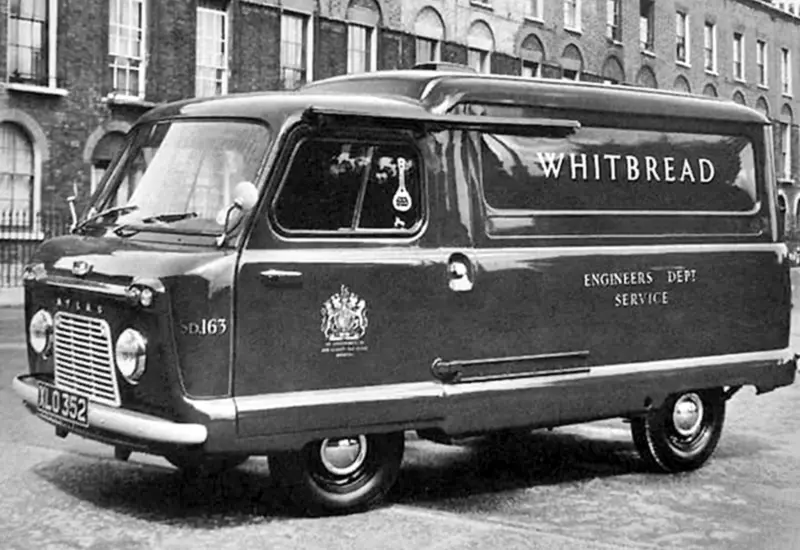DO YOU REMEMBER – THE STANDARD ATLAS?
23 June 2021
The Atlas is the sort of vehicle mainly glimpsed in the backgrounds of 1960s British films rather than on the road. The Standard light commercial was a rather appealing machine in its heyday, but it never seemed to find a market niche despite its virtues. One problem was fierce competition from the Morris JB/Austin 101, the Austin 152/Morris J2, the Thames 400E, the Commer Express and the Bedford CA. The other was the sheer lack of speed from the early models.
Standard unveiled the Atlas in 1958.
The sales copy promised that it turned as easily as a ‘London taxi’ and could be serviced ‘quicker and easier than any other forward control vehicle’. Power was provided by a 948cc engine used in the Ten saloon and buyers had a choice of van or pick-up bodies. The extras list included a heater, rear bumpers, passenger seat and a second windscreen wiper if you were feeling extravagant. Your new Atlas could also be specified in a Coffee, Cornflower Blue, Jamaica Yellow or Pearl Grey paint finish.
Commercial Motor magazine approved of the new Standard van, and their report must have been music to the ears of Canley’s marketing department:
“Remarkable manoeuvrability and exceptional accessibility to the engine for servicing are the outstanding features of the Standard Atlas 10-12-cwt. van. It is the first goods vehicle to be produced by the Standard Motor Co., Ltd., for commercial purposes, previous _vans and pick-ups manufactured by the company having been direct derivations of existing private cars.”
The chap from CM also wrote: “Any doubt which I may have entertained as to the ability of the 35 bhp power unit to provide adequate performance was dispelled by the results obtained on test”.

The brochure further implied that Standard devised the Atlas as an urban delivery vehicle; it was certainly not ideal for A-roads, let alone the new Preston bypass.
In reality, many shop owners found 0-30 in 15 seconds and a 52 mph top speed too slow, even in late-1950s traffic. By September 1960, the “Atlas Major” boasted the Ensign’s 1,670cc plant combined with a remote-control floor gear lever and a maximum speed of 62 mph. Unfortunately, that year also saw the introduction of two new products from BMC and Rootes – the J4 and the FC ‘Spacevan’.
Two years later, the Atlas was re-badged as the 15/20, the latter with either 2,138cc petrol or 2,260cc diesel engines. In 1963, S-T commercial vehicles were now branded as Leylands, with advertisements promising the 20 had “a generous 181 cubic feet of load-space. Underneath, its double-strength body will bear the brunt of a full ton payload with complete assurance and go on doing it year after year”. Alas, the advent of the Ford Transit in 1965 dealt a significant blow to sales.
UK manufacture of the 15/20 ended in 1968, and the newly formed BLMC sold the tooling to Standard Motors of Chennai, where production continued until 1980. More than 40 years later, the Altas is somewhat forgotten, though it deserves to be better remembered. As the Indian market advertisement put it – “Standard Twenty Can Do Plenty!”.
Why choose Lancaster Insurance?
Here at Lancaster, we love classic cars as much as you do and we understand what it takes to protect them for future generations.
We have links with some of the top classic car clubs around the country and some of our policies even offer discounts of up to 25% for club members.
Other benefits of classic car insurance through Lancaster can include:
- Historic rally cover
- Static show cover
- Limited mileage discounts
- Choice of repairer
- 24-hour claims helpline
Give your classic the protection it deserves and get a quote for your classic today.
